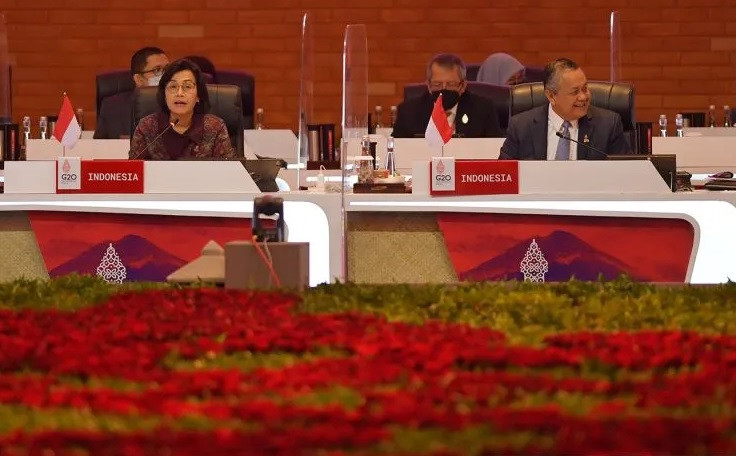Popular Reads
Top Results
Can't find what you're looking for?
View all search resultsPopular Reads
Top Results
Can't find what you're looking for?
View all search resultsThe policy mix turn: From disciplining prices to resolving stagflation
Domestically, Statistics Indonesia (BPS) recorded an inflation rate of 4.35 percent year-on-year (yoy) in June, higher than in May and becoming the highest since June 2017.
Change text size
Gift Premium Articles
to Anyone

While COVID-19 concerns get lower, inflation has become the macroeconomic priority. In the United States, inflation soared to 9.1 percent in July as it raised the highest historic ceiling in four decades.
We ought to acknowledge that an economy requires a proportional rate of inflation (“walking inflation”) to grow. Moderate inflation is a signal of a dynamic economy. The logic is simple: one’s expense means another’s income in economic circulation. What an economy should avoid is “hyperinflation” (where inflation is really high) and “stagflation” (where there is inflation in rather-stagnant growth). Both have disruptive effects on economic movement.
The US Federal Reserve’s Jerome Powell has hiked the interest rate by 150 basis points so far this year. The Fed has engaged in an extreme pendulum to tame the inflation that was once projected to be transitory. Yet US inflation has not slowed. Theoretically, until it gets more conducive, we might expect further monetary tightening. This approach, unfortunately, is alarming not only for the US domestic economy but also for emerging markets. Among other risks, the most obvious is the risk of capital flight.
Some might believe that inflation is a logical consequence of the domestic macro-policy measures that have been taken to outwork the pandemic-induced economic crisis. There have been major policy instruments used, ranging from quantitative easing (in some extreme cases, “helicopter money”) to an expanded government deficit. The rationale for these was to “inflate” the double-edged pressure on supply and demand due to various pandemic restrictions.
The postulate of why inflation happens is that there is too much money to chase too few goods. There are two dimensions: first, the “demand-pull inflation” vis-à-vis the money-in-circulation variable. While there are excess monetary resources available, the productive capacity might be unable to catch up with consumers’ desires to consume. The demand pressure may not necessarily be the dominant cause of today’s inflation, though it is still worth being accounted for.
The second dimension is “cost-push inflation”, the pressure on production costs that affects consumer prices. This aspect urges the analytical focus on the supply disruptions, in many ways. Today, the shocks come from various angles of attack, including the pandemic-restriction effects and the economic consequence of the Russia-Ukraine conflict, both spread globally.
Central banks’ mandate to maintain domestic price stability gets more complicated. US congresswoman Ayanna Pressley acknowledged that the root cause of US inflation was the supply-chain crisis that was outside the Fed’s control. She said, I quote: “we need a more sophisticated toolkit for the error we are in to heal our economy and tackle inflation responsively”.



















